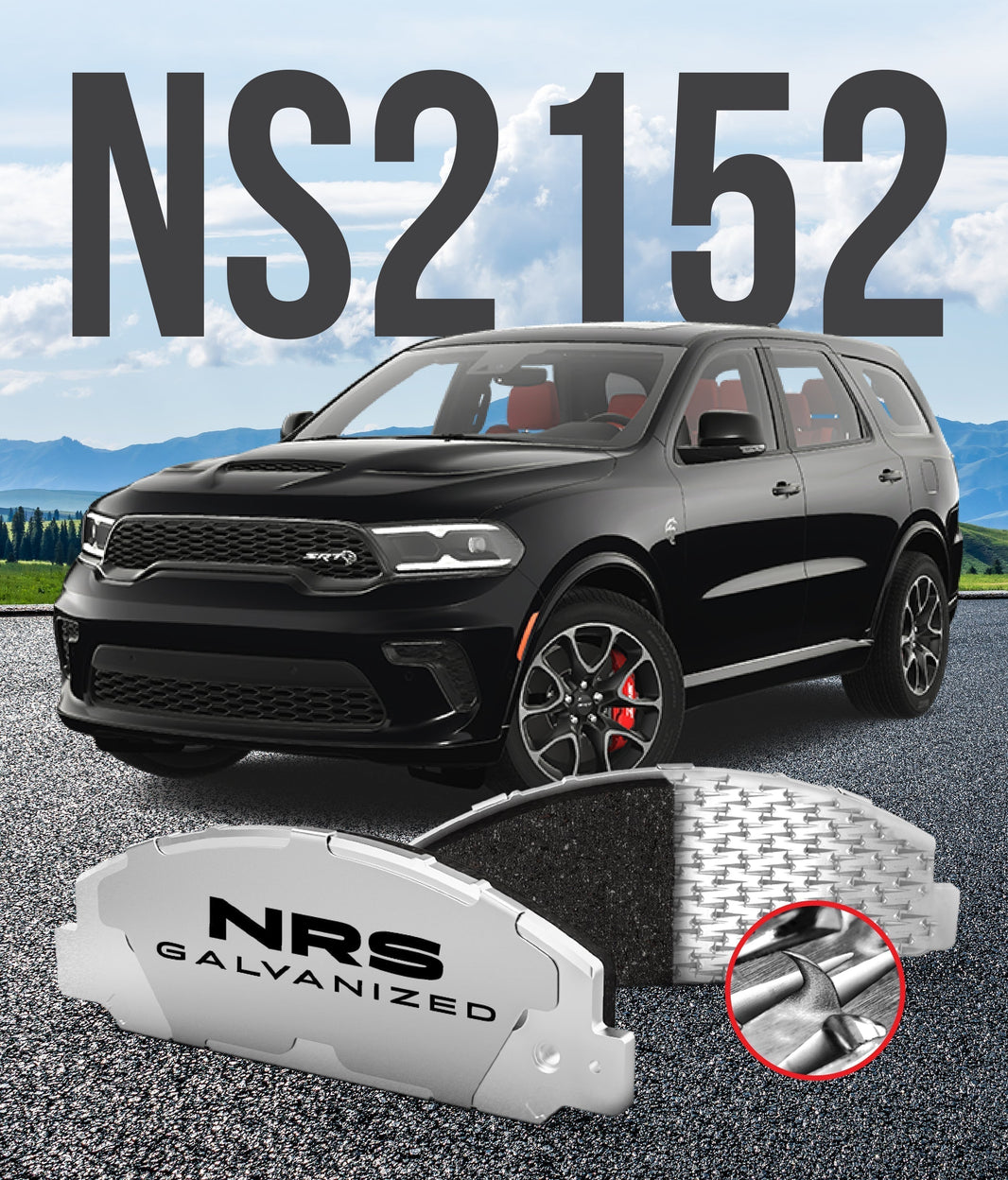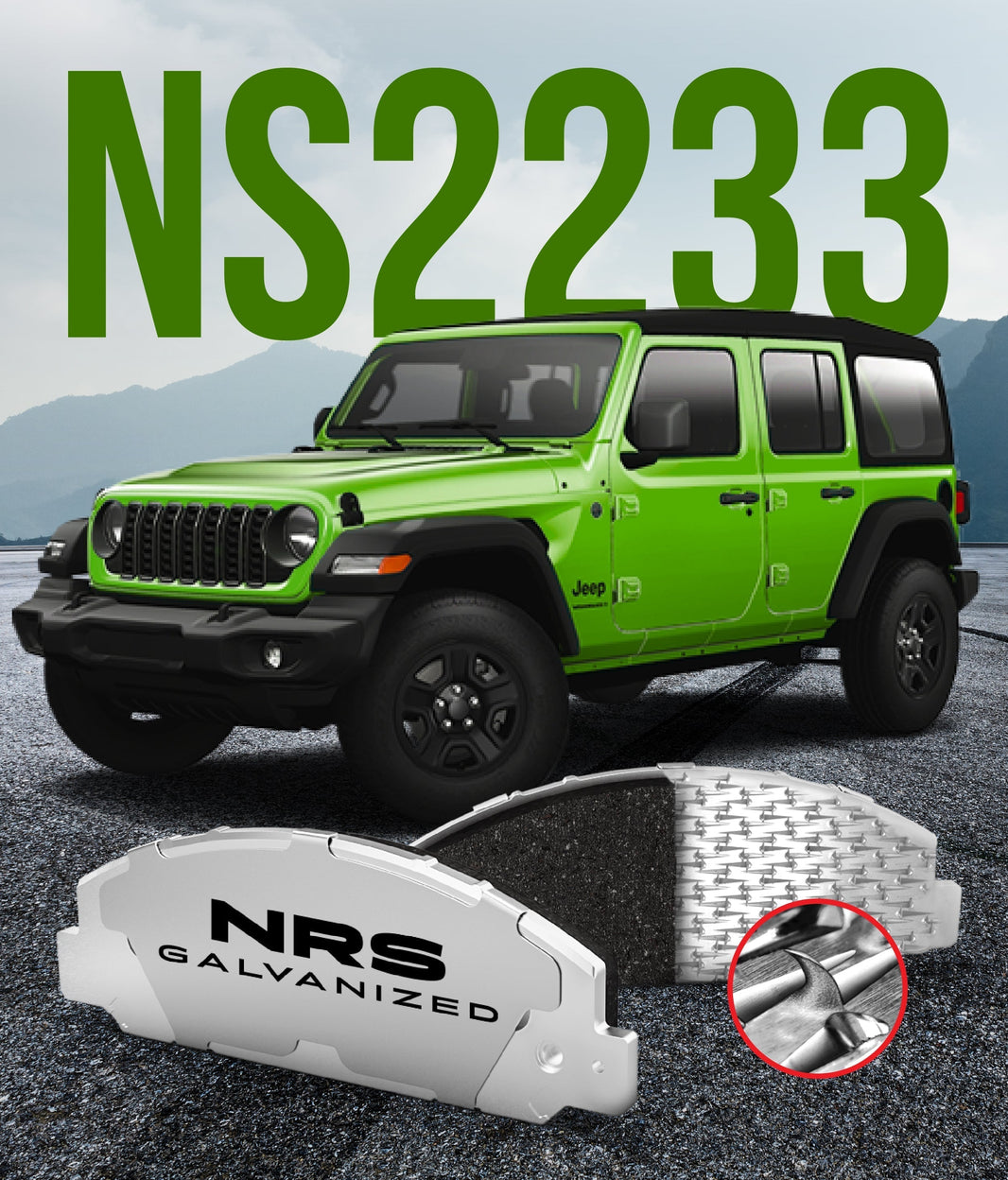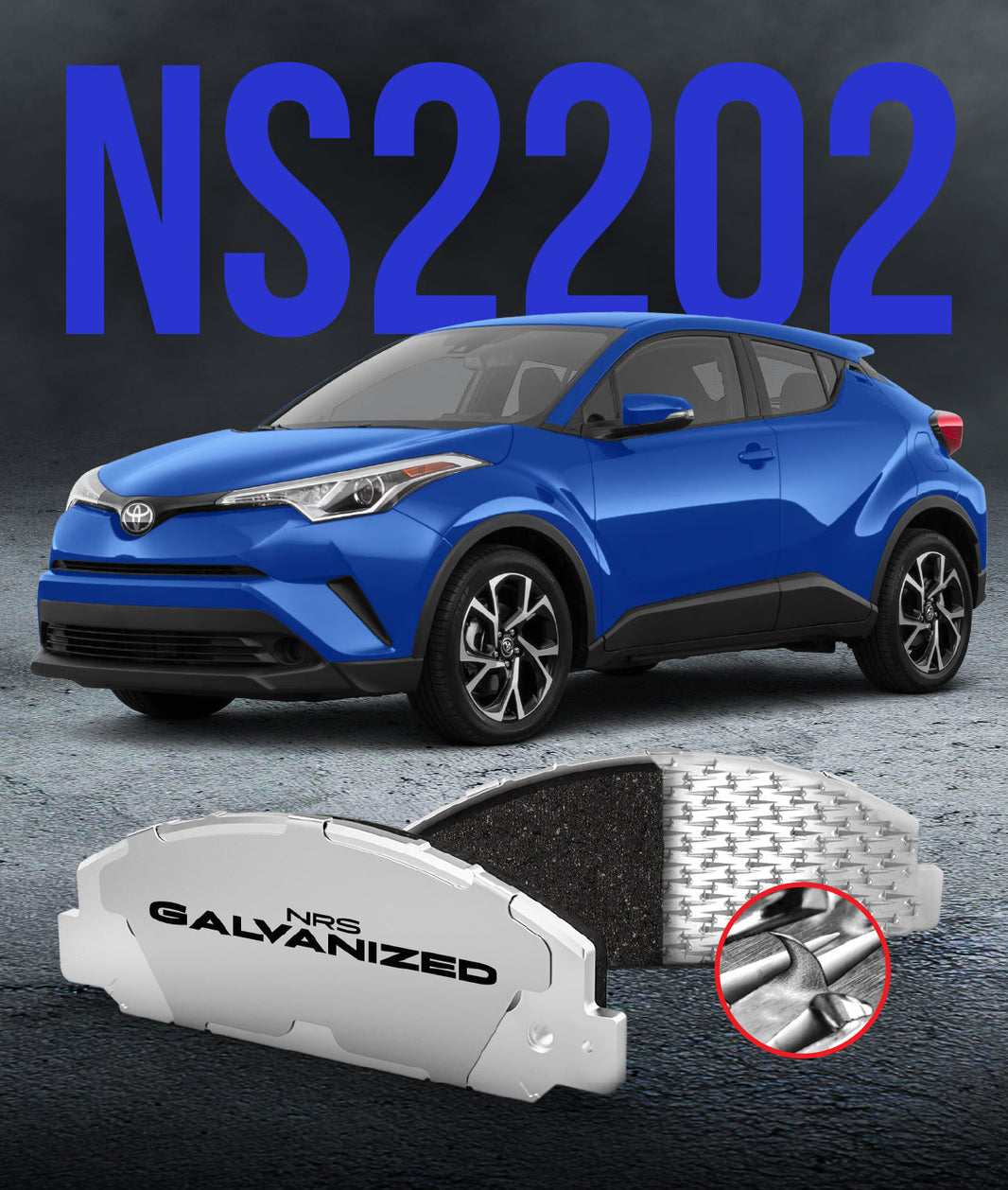
When it comes time for a brake job, the sheer variety of brake pads on the market can be overwhelming. They all promise to stop your car, and in theory they all do, but there are still a number of factors to consider when deciding which brakes to choose to bring your vehicle to a full stop when needed but also which brake pads will last the longest and perform the best at the same time. Brake pads are inherently wear items, designed to sacrifice themselves through friction. However, the way they are constructed and the materials used significantly impacts how long they can perform that duty safely and effectively before needing replacement which is a cost to you the driver. This brings us to a crucial comparison: NRS brake vs traditional brake pads – which one truly offers superior longevity?
Defining the "Traditional" Brake Pad: The Common Standard (and Its Inherent Flaws)
Before highlighting what makes NRS Brakes different, let's establish a baseline by defining what typically constitutes a "traditional" or conventional aftermarket brake pad. These are the pads most commonly found at auto parts stores, often prioritizing a low initial purchase price. They don't meet basic safety requirements, their construction often incorporates design choices that inherently limit their lifespan, particularly in demanding environments. This is a “flaw” but also was an opportunity for improvement, something the average driver may not notice but that is why this article is so important, to help the driver understand WHAT MAKES YOUR VEHICLES BRAKES LAST LONGER?
The most common characteristic of traditional pads is their backing plate construction. These steel plates, which form the rigid foundation of the pad, are typically coated with a simple layer of black paint or sometimes left uncoated. While paint offers minimal, short term cosmetic protection it has no use, in fact it does little to prevent the underlying steel from rusting when exposed to moisture, salt, and temperature fluctuations.
Furthermore, traditional pads almost universally rely on adhesives and types of glue to bond the friction pad material compound to the steel backing plate. While it is effective and keeps the 2 components together it's NOT the best possible bond and under ideal conditions, these adhesives can degrade significantly when subjected to the heat cycles of braking or when compromised by rust creeping in from the edges of the backing plate. These two factors – susceptibility to rust and reliance on adhesives – are the primary Achilles' heels limiting the true usable lifespan of traditional brake pads. This is a fact.
The NRS Difference: Engineered for Endurance from the Start
NRS Brakes approach brake pad design with a fundamentally different philosophy, aiming to overcome the inherent flaws of traditional construction. The stated goal is clear: "to produce the best brake pads in the aftermarket that fit & function as good as or better than OEM." This requires moving beyond accepted norms and employing innovative solutions based on rigorous research and testing, specifically targeting the factors that cause premature pad failure.
The NRS difference isn't just a minor tweak; it's a ground up re-engineering of the industry brake pad focused on durability and safety throughout the entire potential lifespan of the friction material. This involves using superior materials for the foundation and employing a radically different, more robust method for attaching the friction material. Instead of accepting rust and adhesive limitations as unavoidable compromises, NRS has developed and patented technologies to eliminate them as primary failure modes. Let's break down the comparison point by point.
Head-to-Head: Backing Plate Construction (NRS Galvanized vs. Painted/Uncoated)
This is perhaps the most visible difference right out of the box and a cornerstone of NRS's longevity advantage. It addresses the pervasive issue of rust.
-
Traditional Painted/Uncoated Plates: As mentioned, these offer minimal long term protection. Moisture inevitably finds exposed steel, and when combined with road salt (a major factor during winter), rust formation begins. This corrosion weakens the steel backing plate, causes it to swell, and critically, undermines the bond between the plate and the friction material. Eventually, the rust can cause the friction material to lift or separate completely, rendering the pad useless and dangerous, even if significant friction material thickness remains.
-
NRS Galvanized Steel Plates: NRS Brakes utilizes galvanized steel for all its backing plates. Galvanization involves coating the steel with a layer of zinc, a process with a proven history spanning hundreds of years! Galvanization, the process of coating steel with zinc, was first developed by French scientist Melouin in 1742. It gained industrial use in 1836 when chemist Stanislas Sorel patented and named the method “galvanization.”
-
This zinc layer acts as a sacrificial barrier, actively protecting the underlying steel from rust and corrosion. As highlighted in the comparison chart and NRS features, this provides exceptional Corrosion Protection, making NRS pads a perfect "Match For Harsh Environments." This ensures the backing plate remains structurally sound, allowing the friction material to be safely worn down "to the last millimetre" and directly contributing to a longer lasting brake pad in the world. It's why NRS proudly proclaims, "The Next Generation Brake Pad is Galvanized."
Head-to-Head: Friction Material Attachment (NRS Hooks vs. Adhesives)
The second major point of divergence, directly impacting both safety and longevity, is how the friction material is attached to the backing plate.
-
Traditional Adhesives: Conventional pads rely almost exclusively on specialized glues or adhesives. While these adhesives are designed for high temperatures, they can still degrade or fail under the extreme shear forces and repeated heat cycles experienced during braking. Crucially, if rust forms on the backing plate surface beneath the adhesive layer, it physically pushes the friction material away, breaking the bond. This leads to delamination – the complete separation of friction material from the backing plate – which is a catastrophic failure resulting in immediate loss of braking at that wheel.
-
NRS Hooks Mechanical Attachment: NRS Brakes completely overcomes the limitations of adhesives with its award winning NRS Hooks technology. Instead of glue, NRS forms hundreds of "in-situ galvanized hooks" directly into the backing plate surface. These hooks provide a positive mechanical retention of the friction material, which flows around and locks onto these hooks during the molding process. As NRS guarantees, this physical interlock ensures the "friction material will never delaminate," providing safer operation for the "entire life of the pad." This patented system, recognized with the Automotive News PACE award, offers vastly superior shear strength and is completely unaffected by heat or underlying rust (which is already prevented by the galvanization).
Head-to-Head: Fit, Finish, and Environmental Impact
Beyond the core construction, other differences contribute to the overall comparison, impacting ease of use, performance, and responsibility.
-
Traditional Fit & Finish: Fitment of traditional aftermarket pads can sometimes be inconsistent, occasionally requiring minor modifications for proper installation. The paint used can chip easily and may contain environmentally unfriendly substances like lead or volatile organic compounds (VOCs). Brake dust from traditional pads often contains copper, which is harmful to aquatic ecosystems.
-
NRS Fit & Finish: NRS Brakes emphasizes OEM Fit Tolerances, ensuring their pads fit precisely "right out of the box" and meet or exceed original equipment standards for performance and durability. This guarantees Perfect Caliper Fitment. Furthermore, NRS galvanized pads are paint FREE, eliminating associated environmental concerns. They are also engineered to be copper FREE, meeting stringent environmental regulations like those in California and Washington (LEVEL A, B, and N). This commitment makes NRS pads inherently more Sustainable and Environmentally Friendly compared to many traditional options.
The Result: Why NRS Pads Genuinely Last Longer
Based on this side by side breakdown, the reasons why NRS brake pads offer superior longevity become clear. It's not just about using slightly better friction material; it's about systematically eliminating the common failure points that plague traditional pads.
NRS pads last longer primarily because they prevent premature failure due to rust and delamination. By using galvanized steel, rust cannot compromise the backing plate's integrity. By using NRS Hooks, the friction material cannot separate from the backing plate. This means you get to use the full thickness of the friction material you paid for, down to the last safe millimeter. Traditional pads often need replacement long before the friction material is fully worn simply because the backing plate has rusted out or the bond has failed. Furthermore, the secure mechanical attachment and precise fit contribute to Less Vibration, Less Noise, reducing the chances of replacing pads early due to annoying sounds often associated with cheaper, less robust designs. This leads to Extreme Durability and genuinely Long Lasting performance, as reflected in customer testimonials praising their sustained quietness and reliability over time.
Beyond Longevity: Sustained Performance and Safety
The engineering features that make NRS pads last longer also contribute directly to better, more consistent performance and enhanced safety throughout that extended lifespan.
A pad with a rusting backing plate or a weakening adhesive bond cannot provide consistent stopping power. NRS pads, with their stable galvanized foundation and unbreakable mechanical lock, deliver Optimal Performance with reliable friction characteristics and shorter stopping distances from the first stop to the last. Most importantly, the elimination of the risk of delamination provides a crucial safety advantage. You can have peace of mind knowing the friction material will stay exactly where it needs to be, giving you secure, safer stops every time.
Making the Choice: Recognizing Long Term Value
It's true that some traditional brake pads might appear cheaper on the shelf. However, considering the total cost of ownership and the critical importance of safety, the calculation changes.
Opting for the cheapest traditional pads often leads to more frequent replacements. This means paying not only for new pads more often but also for the associated labor costs each time. NRS pads, while potentially having a higher initial purchase price, offer significantly better long term value due to their extended lifespan. Fewer replacements mean less money spent over the life of your vehicle, less time wasted at the repair shop, and the invaluable benefit of enhanced safety and reliability. It’s an investment in quality and durability that pays dividends down the road.
We at NRS Brakes are confident that our approach to brake pad engineering results in a demonstrably superior product, especially when comparing NRS brake vs traditional brake longevity. Our commitment to using galvanized steel backing plates and our patented NRS Hooks mechanical attachment technology directly addresses and eliminates the primary causes of premature pad failure. We set the standard in the aftermarket by providing pads that meet or exceed OEM standards for fit and performance, backed by rigorous testing and recognized by industry awards. We believe we offer the Best Brake Pads because they are engineered for unmatched durability, optimal performance, and enhanced safety, providing genuine long term value for drivers across Canada and worldwide. Choose NRS and experience the difference that superior engineering makes.




